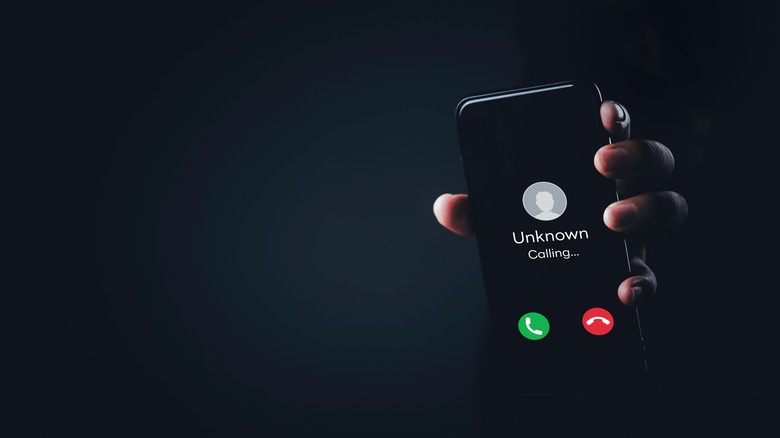Can You Call Back A 'No Caller ID' Number?
Your phone displays "No Caller ID" whenever the caller has chosen to hide their phone number from your screen. This differs from "Unknown Caller" or "Private Number," which typically point to technical problems or blocked numbers. With "No Caller ID," the caller has used a feature that hides their identity at the network level, so your phone doesn't actually receive their number. Because of that, there's no way to dial back directly; your device has nothing to call. Even checking your recent call log won't help, since the number simply isn't recorded.
This blocking method works by adding a prefix code, like *67 in the U.S., which tells the network to hide the caller's identity before passing the call through. Since the system never provides the number to you, your carrier, or your phone's software, calling back isn't an option. If you attempt to redial, your device will either do nothing or attempt to call an empty entry. That's why these calls are frustrating: they're untraceable by normal means. Unless you set up a call-tracing feature before the call comes in, you won't be able to see who it was or return the call directly.
What you can do if you need to trace a No Caller ID call
Although you can't redial a "No Caller ID" number, there are a few options if you really need to find out who's calling. One method is Call Trace services, which many carriers provide by dialing *57 immediately after receiving the call. This doesn't reveal the number to you directly but forwards the details to your carrier and, if necessary, law enforcement. It's designed for serious cases like harassment or threats rather than casual curiosity.
Another option is contacting your carrier to enable services that block or filter anonymous calls altogether. Verizon, AT&T, and T-Mobile all have variations of anonymous call rejection that automatically block calls that hide their ID. If you're getting repeated calls from "No Caller ID," the most effective step is usually to block anonymous calls entirely. That way, callers who refuse to show their number won't even get through.
It's worth noting that some legitimate calls, like those from doctors, government agencies, or certain businesses, may use blocked IDs. If you enable blanket blocking, you might miss those. That's why tracing or reporting through your carrier is often the better path if the calls are persistent or harassing.
Preventing unwanted No Caller ID calls in the future
Since calling back isn't possible, prevention becomes the main strategy. Most modern smartphones allow you to silence or block calls from unknown or hidden numbers. On iPhones, you can enable "Silence Unknown Callers," which automatically sends them to voicemail without ringing your phone. On Android devices, the steps vary by manufacturer but generally include options to block calls without a number in the phone app settings. Carriers also offer network-level filtering that screens spam and anonymous calls before they even reach your device.
AT&T's ActiveArmor, T-Mobile's Scam Shield, and Verizon's Call Filter all include anonymous call blocking features. If you want more control, third-party call-blocking apps add extra tools like real-time spam reporting and custom filtering rules. The key is balancing protection with accessibility. Blocking every hidden number may stop spam, but it can also block important, legitimate calls. For example, hospitals and law enforcement agencies sometimes mask their numbers for privacy reasons.
A more balanced approach is to set up filters that let contacts and known numbers through while blocking scam-likely calls. If you're getting targeted by frequent anonymous calls, keep records of the times and dates, then report them to your carrier. In more serious cases, law enforcement can work with your carrier to trace the source. In everyday use, though, the most practical solution is prevention; letting your phone or carrier handle unwanted "No Caller ID" calls so you don't have to worry about calling them back.


